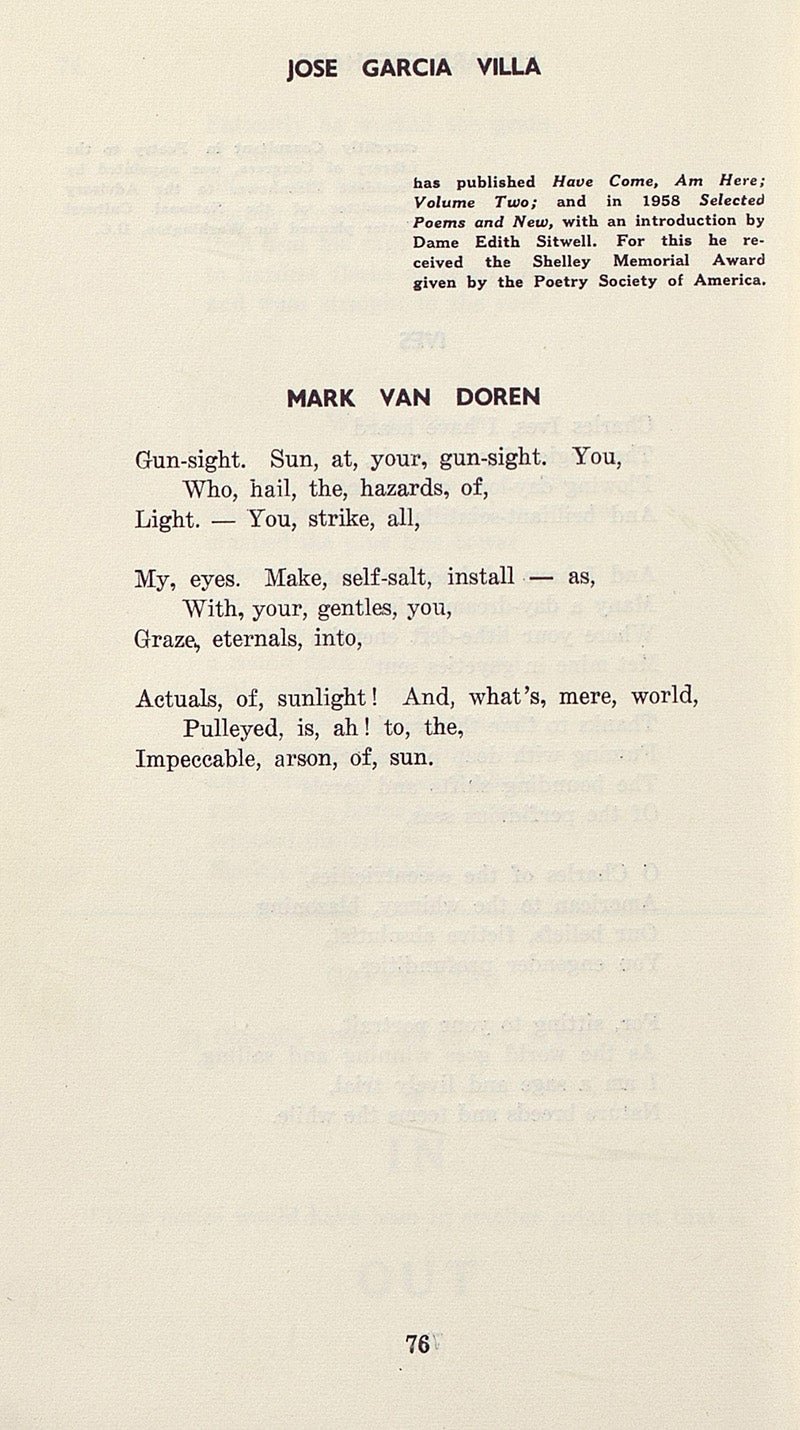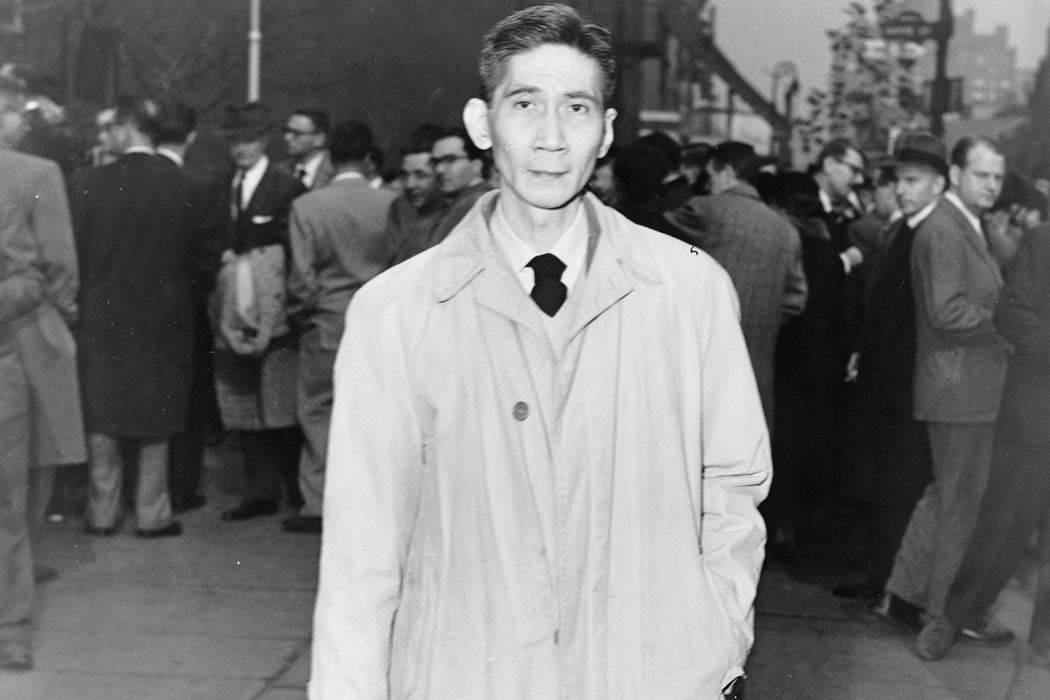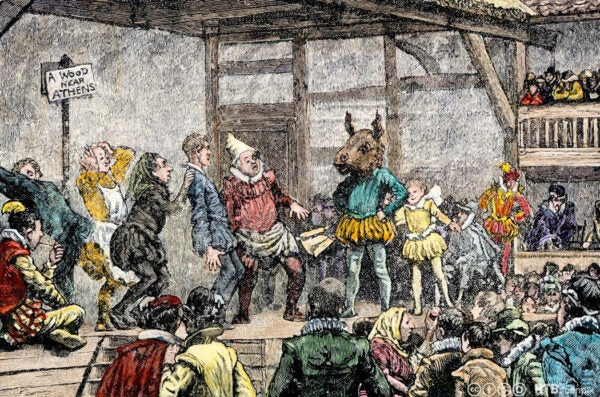Modernist poet José Garcia Villa took great pride in the form and structure of his verse. His deployment of the humble comma was, he said, “a new, special, and poetic use,” as demonstrated in poems like “Horizon,” from his 1949 collection, Volume Two.
The,bright,Centipede,
Begins,his,stampede!
O,celestial,Engine,from,
What,celestial,province!
Unfortunately, the critical reception of Volume Two was more muted than it had been seven years earlier, when he had made his American poetry debut with the publication of Have Come, Am Here. And, within two decades of the release of his second collection, the innovation-driven writer would be fast fading into relative obscurity in the United States.
Villa, born in 1908 in Manila, had been renowned in the Philippines from his college days. He was well received in the United States when he began publishing there in the 1930s. He rubbed shoulders with greats like Elizabeth Bishop and Tennessee Williams and counted E. E. Cummings as a friend. What can be learnt from his “rapid rise and fall,” as Timothy Yu describes Villa’s American career?
Examining contemporary reviews of Villa’s poetry, Yu finds that critics ignored his earlier work in the Philippines and instead presented Have Come as the work of “a new ‘American’ voice.” In line with that characterization, critics located Have Come “squarely in the Anglo American poetic tradition” and identified Villa’s literary influences as poets such as Cummings, Emily Dickinson, Gerard Manley Hopkins, and even William Blake.

At the same time, fellow poet Marianne Moore, a staunch fan of Villa’s, praised his style with a line that Yu finds particularly telling: she wrote that “the delicacy with force of such writing reminds one of the colors of black ink from a hogs’-hair brush in the hand of a Chinese master.”
Moore’s “remarkable comparison of Villa to a ‘Chinese master’ alludes to the myth of China that underlies modernism itself,” says Yu, pointing to how Anglo-American modernists were preoccupied with their own fantasy of image-centric Chinese art. Villa walked a fine line between representing an Anglo-American tradition and a supposedly “oriental” sensibility. But both his nationality and his later experimental style disrupted this illusion.
Negative reviews of Volume Two were not shy about wielding racism in their criticism. One even portrayed Villa as hailing from “Manila or Guadalajara”—treating the two former Spanish colonial cities as interchangeable—to convey the accusation that “his foreignness makes it impossible for him ever to be fully incorporated into an American modernist canon,” as Yu puts it.
Weekly Newsletter
By the time Villa released Selected Poems and New in 1958, he was a “victim to changing literary tastes as much as to racism,” and the collection would be his last major work in the United States. As Yu explains,
American modernism could only adapt to the phenomenon of a Filipino modernist writer by placing him squarely within the Anglo American literary tradition, while filtering his racial difference through an orientalism already present within modernist ideology.
That orientalism created an opening through which Villa could slide his work. In that way, “race became a curious kind of asset in his US canonization,” Yu writes. “But it also, as his fall from favor suggests, placed a limit on the kinds of formal gestures that would be accepted in his work.”
Support JSTOR Daily! Join our membership program on Patreon today.







